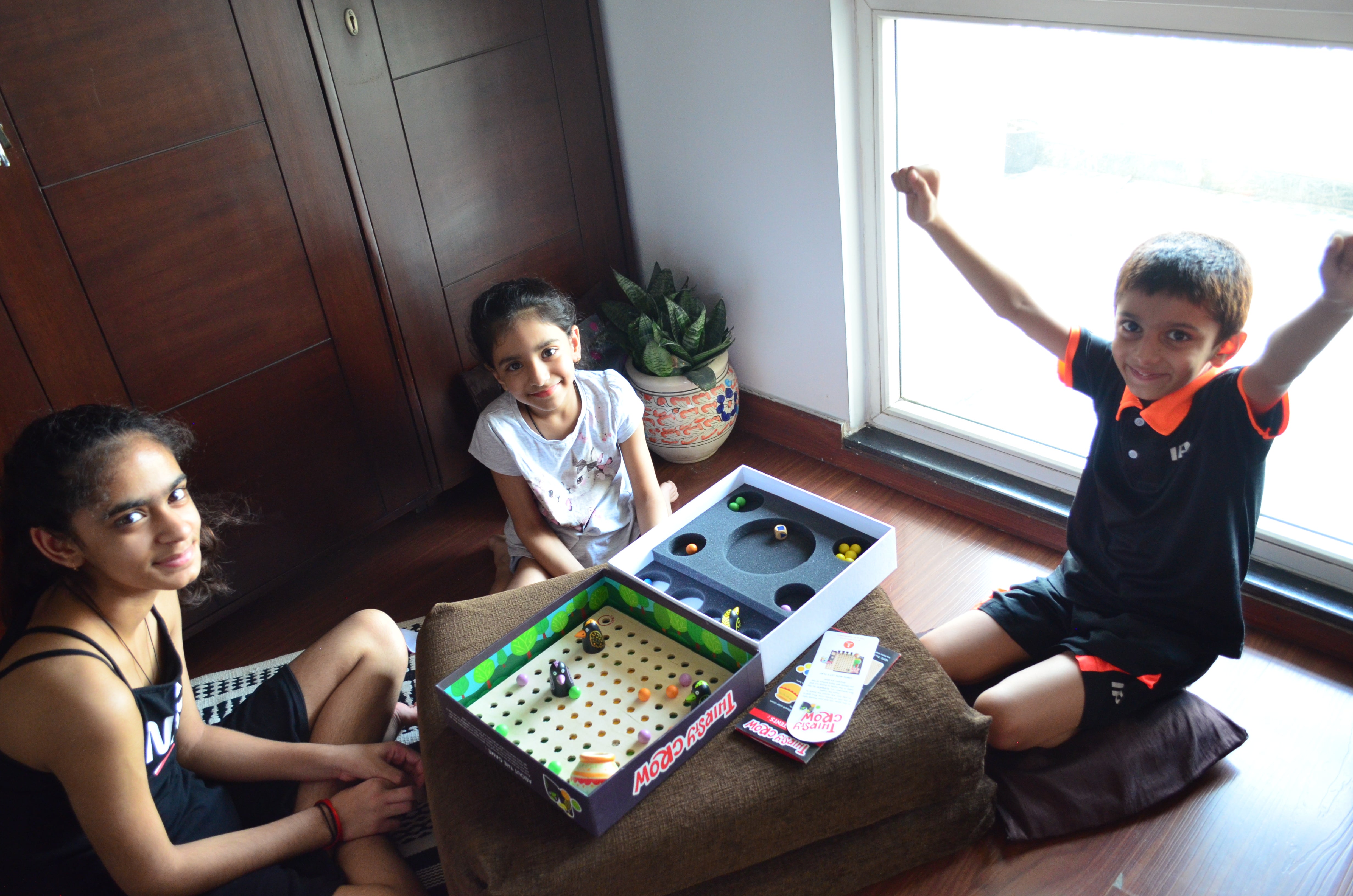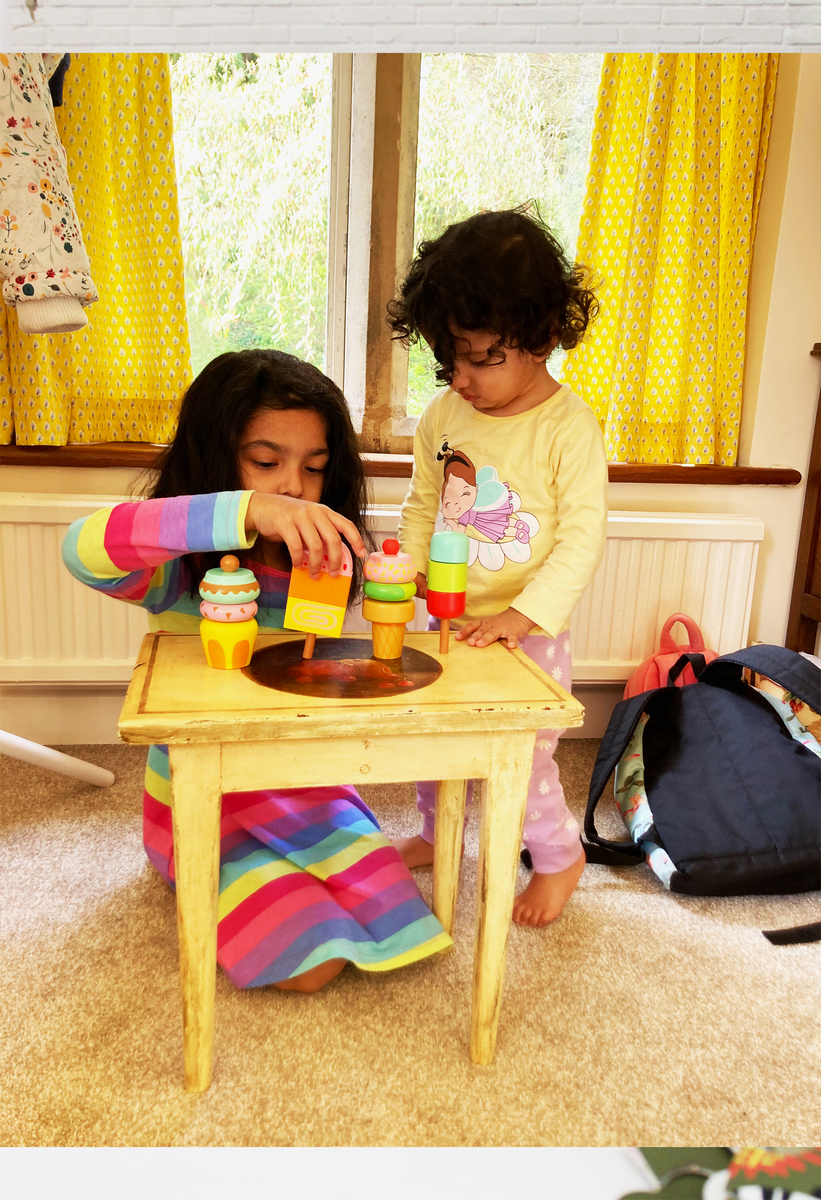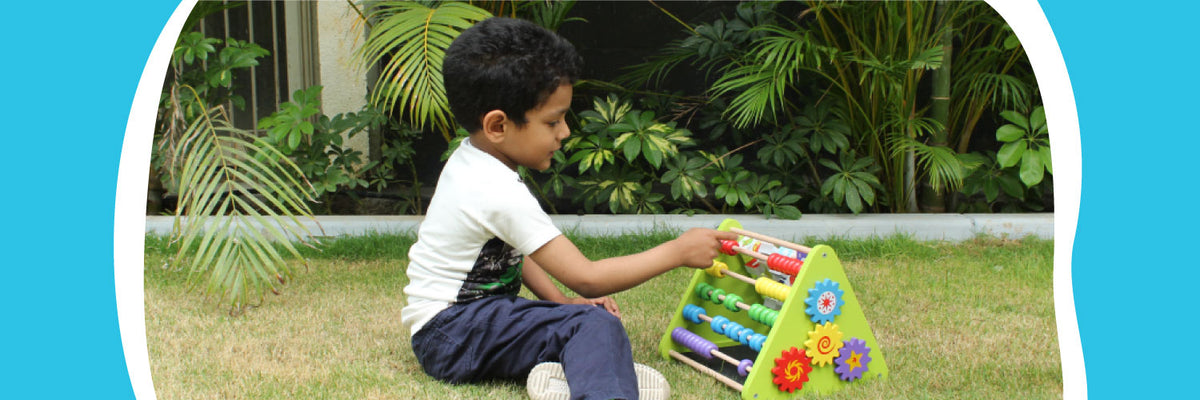How do I play with a baby? – If you are an expecting parent, a new mom or dad, or an auntie or uncle to-be, this question would certainly have popped into your mind.
When thinking of play, most of us think of pretend play, board games, sports, and the like. So it’s natural to conclude that a baby who can barely move or speak won’t be able to play.
But while babies don’t play in the typical manner, they have their own way of experiencing and interacting with the world. Not only is baby play a wonderful way to bond with a child, but it is also important for their development.
So let’s explore what exactly play means to a child who is less than a year old and how you can make use of the ample play opportunities present around them!
What is play for a baby?
For children, play is a fun way to engage their existing skills and level up. For a baby, this refers to any action or game which can help hone their basic motor and sensory skills.
Baby play could be anything from shaking a rattle in front of your child to tickling them. Since their senses are just beginning to develop, every experience is novel and the world is filled with delight for a newborn!
While there are many great toys you can use, playful experiences like cooing into your child’s ears or humming a tune as you rock them are just as valuable and exciting for a baby.
Fun ways to play with your baby
Since baby play is all about honing basic skills, let’s look at simple games that sharpen each of your baby’s senses.
Visual play
1. Black and white cards: A newborn can only see in black and white. So playing with a set of High Contrast Flash Cards is perfect to help your little one gradually recognise form, pattern, and colour over their first few months. Tie it above their crib, hold it as a distance and let them enjoy the designs, or use it to keep them engaged during tummy time.
Don’t forget: Your child’s ability to see is steadily developing in their first few years. Find out how to introduce your child to colours according to their age. |
2. Go fishing: Attach flash cards, rattles, or plush toys to a ribbon and bounce it before your child. A baby gym is a super easy way to turn this into a play area! Your baby will love the bouncy movement and it will also hone their visual coordination.
3. Peek a boo: A classic that never disappoints – hide your face behind your palms and do the peek-a-boo/I-see-you routine. To a child who is still learning object permanence, this game can be quite a thrill!
4. Mirroring: Children take about 15-24 months to recognise their reflections. So holding a mirror up to your baby or putting them before a horizontal mirror as they crawl will feel like playing with a new person for them!
Sound play
1. Sounds around the house: Carry your child around the house and pause for them to listen to the gentle sounds of everyday life. The chirp of a bird, chopping of vegetables, a doorbell, or even tapping your fingers against a table are all new and interesting for your little one.
2. Sound toys: From rattles to spinners, toys that make pleasing sounds are every baby’s favourite! Shake a rattle before them and let their eyes follow the sound or hold it close for them to reach out and grab. As they grow, you could place it as a distance to motivate them to crawl or walk!
3. Clap clap: A clap is one of the happiest sounds and just like us, babies love it too! Clap your hands or hold your child’s hands and show them how to clap. The musicality, movement, and grabbing sound are sure to get your baby smiling!
Sensory play
1. Tactile toys: Texture can be very interesting for a baby. They will love some and absolutely detest others! Touching, holding, and kneading a texture they like will soothe your child and hone their sensory skills. Crochet toys, sensory cubes, and clutch balls are all excellent tactile toys.
Did you know that a baby’s skullcap takes 12-18 months to form? A mustard seed pillow is the perfect sensory tool to hold your child’s delicate head during this time. |
2. Music and dance: Play some soft music, carry your baby, and slowly sway with them from side to side. This won’t just calm your child, but will help build an appreciation for music from a young age.
3. Tickle time: Who doesn’t melt in a tickle session? Tickling your baby and cooing softly into their ears is the perfect way for a baby to feel all the love and warmth they need!
Movement play
1. Pedal pedal: Hold your baby’s legs and pedal them like a bicycle! This movement will give your little one a kick and strengthen their leg muscles.
2. Mobile: Baby mobiles are fantastic toys as they hone visual and motor skills. You could tie it above their crib, encouraging them to kick and reach for the toy. The different shades on a pastel gobbi mobile will instantly grab their attention and serve as a gorgeous piece of decor too!
3. Baby gym: A baby gym is an investment, but one that’s certainly worth it! It opens up an entire space for your child to safely exert their independence through play. They can crawl on the mat, swat the dangling toys, and even use it as a tent when they grow older.
Ever heard of a ‘baby play area’? Find out how to set up your baby’s play area in 5 simple steps! |
Talk play
1. Read to them: It’s never too early to introduce your child to the world of books. A good board book with simple, chunky drawings or even a sensory book are sure to be hits with babies. Keep them in your lap, show them the pictures, do fun voice-overs, and let them turn the pages!
2. Share your day: Children learn to speak by listening to us. Talking to your baby for even 15 minutes every hour can help familiarise them with the sounds of words. Telling them about your day is a simple way to bond, build a strong parent-child relationship, and teach them to communicate. While they may take time to respond, remember your child is soaking it all in.
3. Sound volley: While a baby less than a year old may not be able to say words, they will certainly make sounds. Mimic these sounds back to them. This serve and return will help your child understand the back and forth nature of a conversation.
Even babies need a break!
Remember that every baby’s capacity for play will be different. When your little one is tired or overwhelmed, give them some time to rest and recharge. Some signs they may want a break are if they look away, start crying or fussing, seem sleepy, or even start to hiccup. At such times, hold them and let them rest against you.
When they are ready to play again, they will be clear eyed, look directly at you, and jiggle their arms and legs. It may take a while to learn your baby’s cues and rhythms but in time, you will know just when it’s time to stop and to start playing again!









